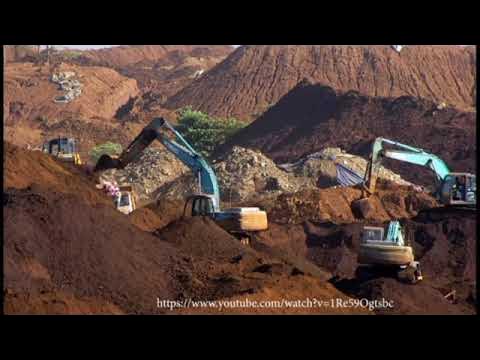Beginilah Proses Pengolahan Batubara Dari Tambang Ke Pembangkit Listrik
Summary
TLDRThe video explains the process of coal extraction and its conversion into electricity, highlighting coal's significance as an abundant energy source. It details the classification of coal types, primarily focusing on lignite in North Dakota, and outlines the extraction methods, including open-pit mining. The coal is then crushed and burned to produce steam, which drives turbines for electricity generation. Additionally, the video addresses the treatment of emissions from burning coal to reduce environmental impact, and it concludes with the procedures for exporting coal, particularly from major ports like Newcastle in Australia.
Takeaways
- 😀 Coal is a widely used energy source due to its abundance and lower cost compared to other sources.
- 🔋 There are four main types of coal based on carbon content: anthracite, bituminous, sub-bituminous, and lignite.
- 🇺🇸 The United States, particularly North Dakota, has the largest lignite reserves, estimated at 25 billion tons.
- ⏳ North Dakota's lignite reserves are projected to last around 800 years at current production rates.
- 🚜 Open-pit mining is primarily used in North Dakota due to the shallow depth of lignite deposits.
- 🔥 The coal processing involves crushing lignite into fine powder and burning it to generate steam.
- ⚙️ The steam drives turbines connected to generators, converting thermal energy into electricity.
- 🌬️ Flue gas produced from burning coal contains pollutants that require treatment to prevent environmental damage.
- 🧪 Sulfur oxides in flue gas are neutralized with a lime spray to prevent acid rain formation.
- 🌏 Coal mined is not solely for electricity; a significant portion is exported, notably through Australia’s Newcastle port, the largest coal export facility.
Q & A
What is the primary source of electricity mentioned in the transcript?
-The primary source of electricity mentioned is coal, which is abundant and more affordable compared to other energy sources.
How is coal categorized based on its carbon content and heat energy?
-Coal is categorized into four types based on carbon content and heat energy: anthracite, bituminous, sub-bituminous, and lignite.
Which state in the U.S. has the largest lignite coal reserves?
-North Dakota has the largest lignite coal reserves in the U.S., with approximately 25 billion tons.
What methods are used to extract lignite coal?
-Lignite coal can be extracted using open-pit mining and underground mining, although open-pit mining is preferred for surface-level lignite.
What processes are involved in the preparation of lignite for energy production?
-The preparation processes include moving topsoil and subsoil, excavating overburden, crushing lignite into smaller pieces, and transporting it to power plants.
Describe the process of converting lignite into electricity.
-Lignite is burned in a boiler to produce hot gases, which heat water to create high-pressure steam. This steam drives turbines connected to generators, converting mechanical energy into electricity.
What happens to the steam after it is used to drive the turbines?
-The steam is cooled in a condenser, turning it back into water, which is then returned to the boiler for reheating, creating a continuous cycle.
What are the environmental concerns associated with burning coal?
-Burning coal produces flue gas containing harmful compounds, including sulfur oxides, which can lead to acid rain and other health hazards.
How is flue gas treated to minimize environmental impact?
-Flue gas is treated to remove particulates and sulfur oxides, with fly ash collected using electrostatic precipitators and sulfur oxides neutralized using lime.
What is the significance of carbon dioxide emissions from coal combustion?
-Carbon dioxide emissions are a major environmental concern because there are currently no cost-effective methods to eliminate these emissions, contributing to climate change.
Outlines

此内容仅限付费用户访问。 请升级后访问。
立即升级Mindmap

此内容仅限付费用户访问。 请升级后访问。
立即升级Keywords

此内容仅限付费用户访问。 请升级后访问。
立即升级Highlights

此内容仅限付费用户访问。 请升级后访问。
立即升级Transcripts

此内容仅限付费用户访问。 请升级后访问。
立即升级浏览更多相关视频

It turns out that this is the process of processing coal from the mine to the power plant

Proses Singkat Pengolahan Batubara Menjadi Energi Listrik dan Pembersihan Gas Buangnya

Documentary on COAL: Mining, History and Future Outlook

Pembangkit Listrik Tenaga Surya ( PLTS ) || Komponen dan Cara Kerjanya

PLTU (Pusat Listrik Tenaga Uap) - Prinsip Kerja, Kelebihan dan Kekurangan

VIDEO RISET 03
5.0 / 5 (0 votes)
